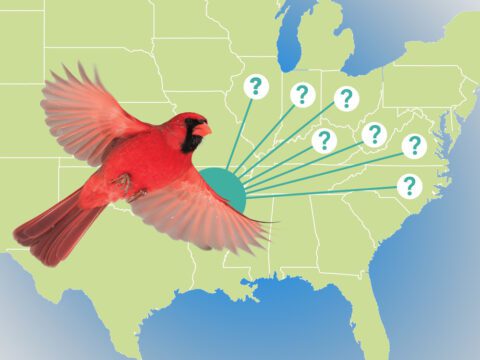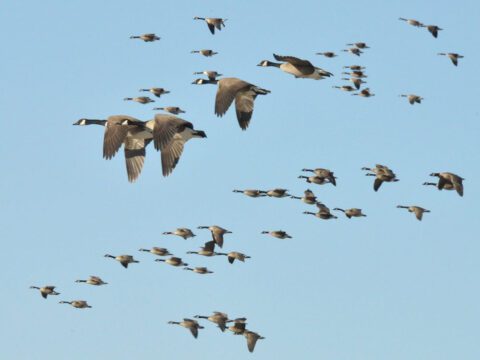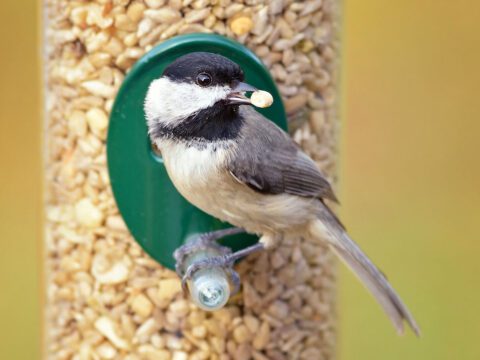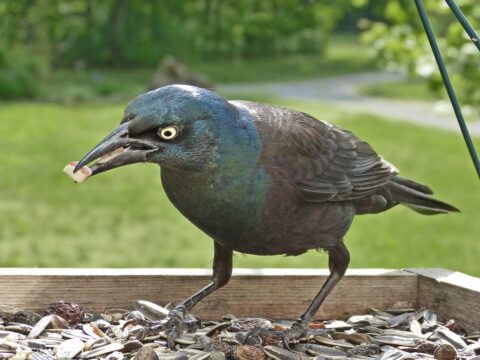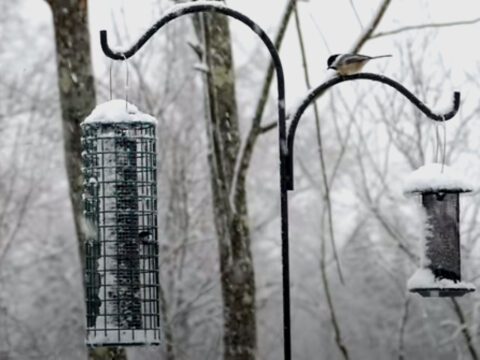State of the Birds: Can We Learn from Austin’s Bats?
By Hugh Powell March 12, 2010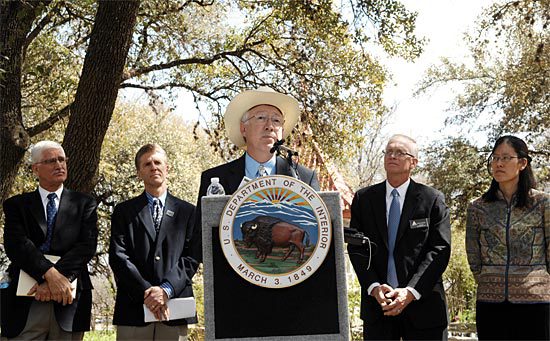
Yesterday, Secretary of the Interior Ken Salazar announced the 2010 State of the Birds Report in Austin, Texas. Our communications director, Miyoko Chu, was there too (that’s Miyoko at far right, above). The threats that climate change poses to birds are unsettling, but Miyoko was heartened by an unlikely sight: thousands of bats flying up from their famed roost under the Congress Avenue Bridge. Here’s why:
The effort to assess nearly 800 of our nation’s bird species for their vulnerability to climate change was a mammoth task that began last summer. For months, the report came together on conference calls involving scientists from the report’s 10 agency and conservation organization partners.
I remember a profoundly sobering moment during one of those calls. The scientists were examining the best available evidence—and were all hopeful conservationists who have dedicated their lives to protecting birds—and the prognosis wasn’t good. The 2009 State of the Birds report had already showed that one-third of our nation’s birds are endangered, threatened, or experiencing severe declines. Looking at the effects of climate change was like considering how the patient you were trying to save from heart disease was going to fight cancer too.
Rather than being paralyzed, however, they quickly went into action—producing the report to communicate the urgency of the situation to policy makers, conservation organizations, and the general public—and to outline conservation strategies to help birds where they need it most.
Yesterday I had the privilege of hearing that message delivered by the Secretary of the Interior in Austin’s Zilker Botanical Garden, one of the Secretary’s stops on his tour of Texas’s National Parks and Wildlife Refuges. As I stood behind him at the podium, facing a crowd of local conservationists, government officials, and reporters, I thought how fortunate we were to have such a champion for bird conservation in our country’s highest leadership. (Some of the Secretary’s remarks, and mine, were captured in an AP story.)
At the end of the hectic day, I finally found a quiet moment to step out of the hotel for a walk. I paused to watch hundreds of grackles clamoring in the trees, six Cedar Waxwings flying overhead, and 40 Snowy Egrets settling down to roost across the river. As I walked along the gravel path and under a bridge, I heard the high-pitched chattering of thousands of bats.
I waited for several minutes—and then the bats suddenly materialized—pouring out from under the bridge and streaming over the water against the backdrop of the city’s skyscrapers—unfazed by the tourists, cars, and roads below.
Years ago, when people first started noticing bats at the Congress Avenue Bridge, some people petitioned to eradicate the colony. But Bat Conservation International raised awareness and appreciation of these Mexican free-tailed bats, and today it is the largest urban bat colony in North America (here’s a great YouTube video of hundreds of thousands of bats in the sky). It all began with committed conservationists getting people to stop, take a look, and ultimately care enough to make sure that the bats didn’t disappear.
I thought of our nation’s 48 million bird watchers who pause to look out for birds each day—and the millions more who might read about the State of the Birds report in the headlines. I took a little comfort in the idea that it all starts with telling a story and getting people to care. And then stepping into action.
The State of the Birds report was prepared as part of the North American Bird Conservation Initiative, an effort that includes the Cornell Lab, the American Bird Conservancy, the Association of Fish and Wildlife Agencies, Klamath Bird Observatory, National Audubon Society, National Fish and Wildlife Foundation, Nature Conservancy, and the U.S.D.A. Forest Service, U.S. Fish and Wildlife Service, and U.S. Geological Survey.

All About Birds
is a free resource
Available for everyone,
funded by donors like you
American Kestrel by Blair Dudeck / Macaulay Library

